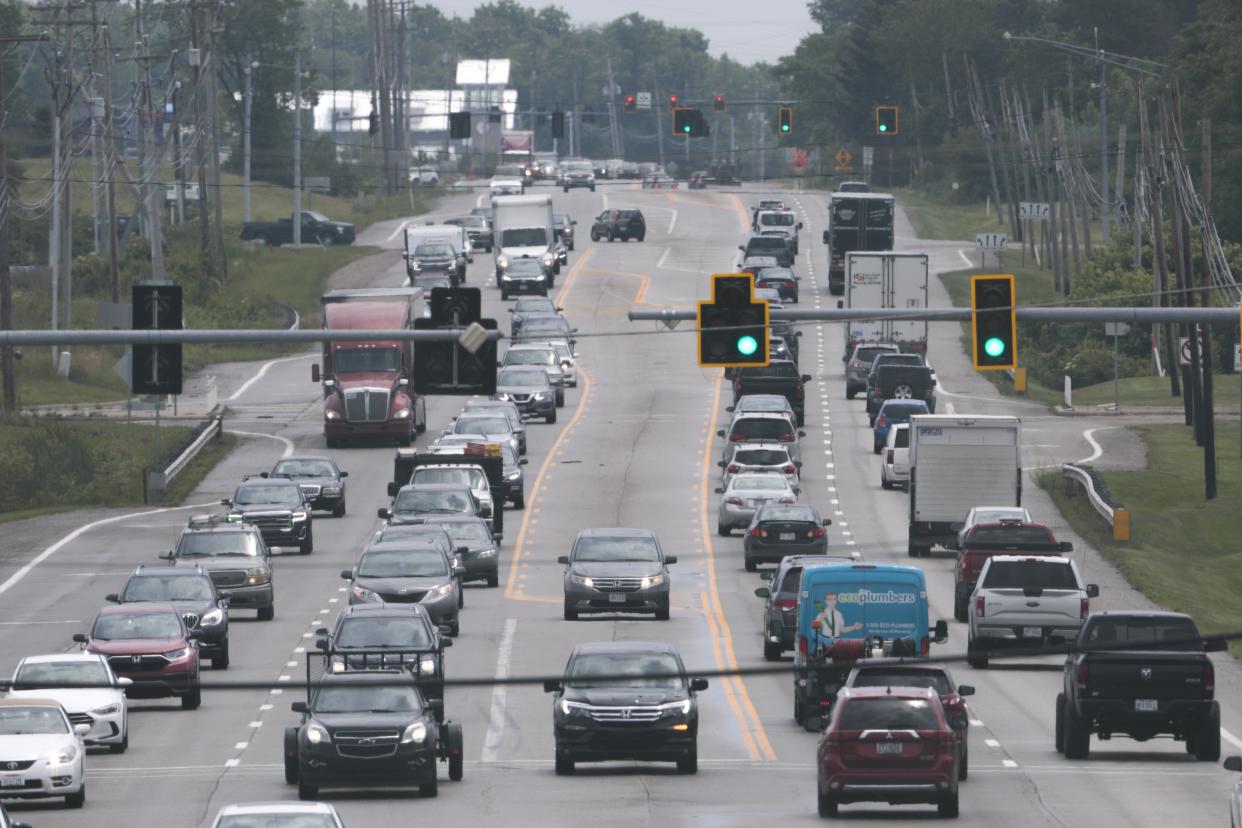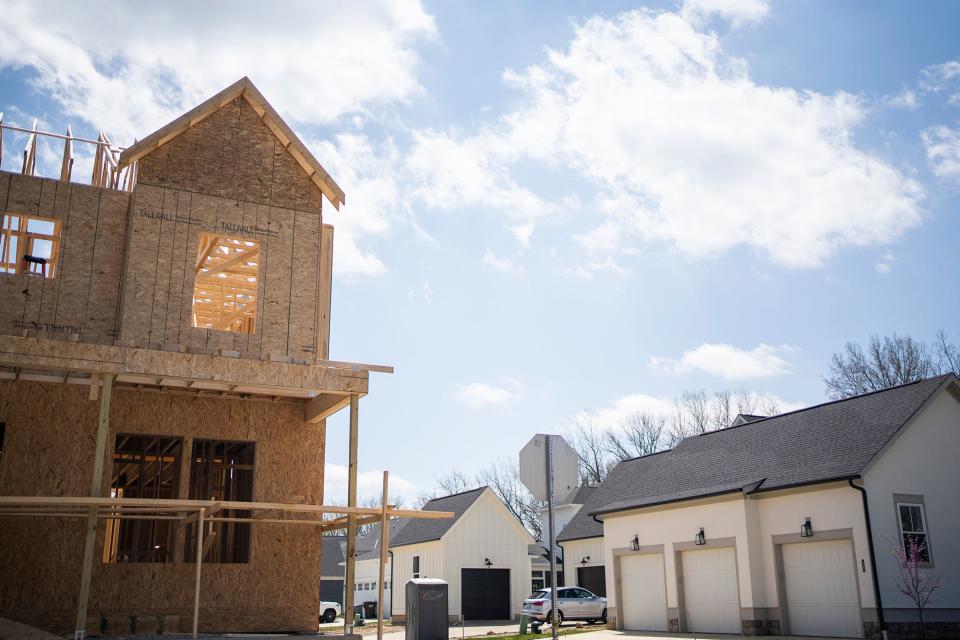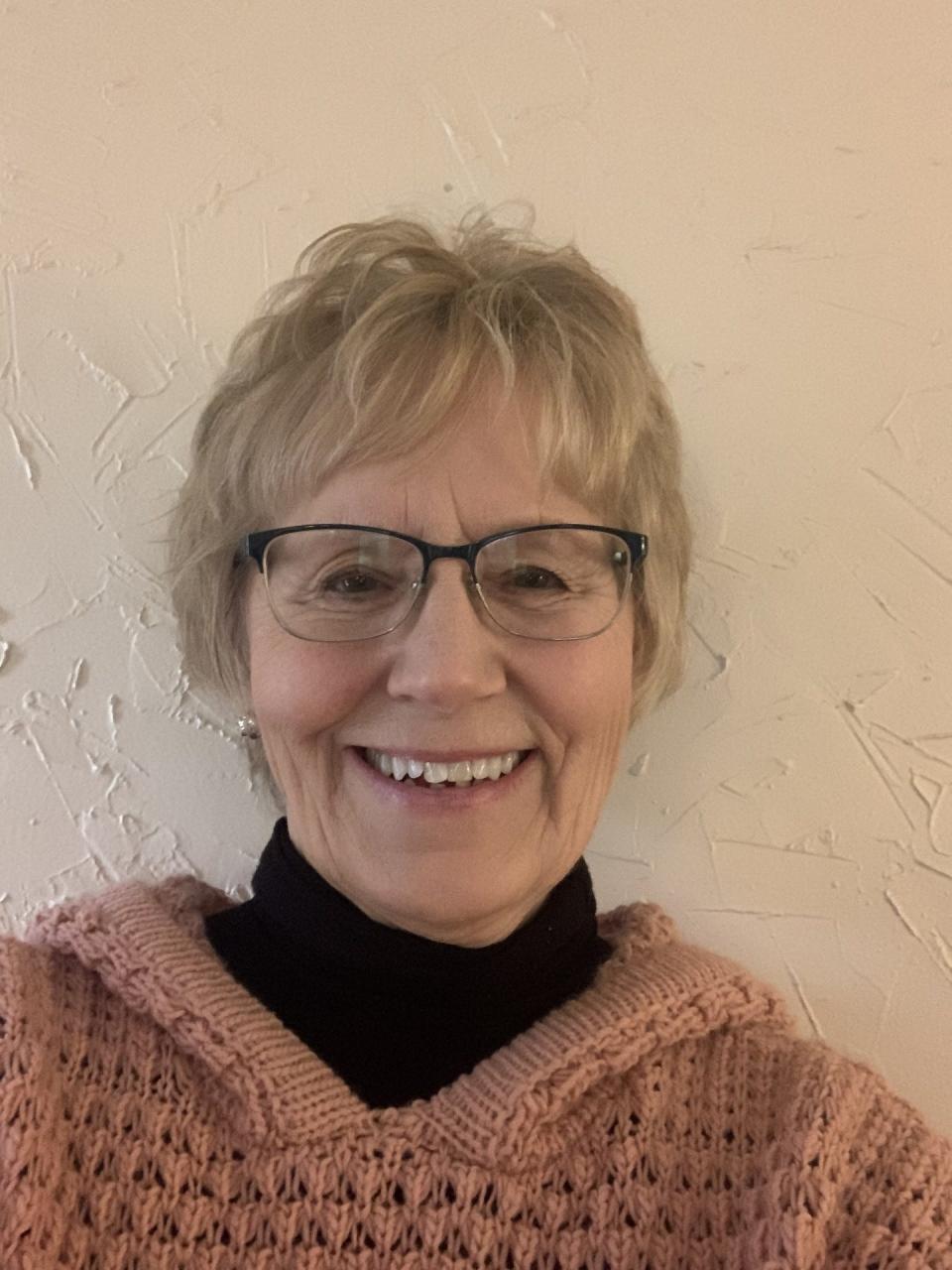The Lewis Center I knew is long gone. Is this the price we pay for progress?

A walk back in time can help create a frame looking at losses and gains.
I’m a boomer who grew up in the tiny village of Lewis Center. I drove down Lewis Center Road recently, through what used to be my little Mayberry-type village and was stunned by the vast changes in geography.
Much has been knocked down in order to build up and out. Evans Farm sits on the north side of the road with its high-dollar-rural-feel, a modern version of a small town. But there are hardly any parts recognizable for boomers raised in those small nests in the old village section on the south side of the road, the section on Lewis Center Road I’ve dubbed “the real Lewis Center.”
The section of railroad tracks running through the village, separating the United Methodist Church side from my side of the tracks, remains but the crossing is no longer passable. That was the crossing my brothers and I used when mother made sure we all tumbled out of our tiny house on the corner of Franklin and 1st streets to attend church and Sunday school. Our small house once teemed with 6 kids, parents, plus few stray kittens.
It remains but without trees or landscaping. The barn/garage in back of our lot that housed my younger brothers' small pony named Little Joe is long gone. The clothesline separating our house from my great aunts’, where mother hung all my brothers’ jeans, even in the dead of winter, is gone. The side porch, where she leaned those frozen jeans against the wall to thaw, remains. The large maple tree we sat beneath in the summer to snap all those green beans from my grandfather’s nearby garden, has been cut down. “Snap the ends first then the middle,” instructed my great aunts.

The large yellow house where I smoked my first cigarette with a friend who will go unnamed, now gone. But not the memory of her mother calling mine to inform of our transgression. By the time I scurried across those railroad tracks to home, mother was standing on the sidewalk with her arms crossed.
The white clapboard church remains but with different shape and form, additions and remodeling are still in the works.
The bell chapel announcing Sunday morning worship and those wide front doors remain but the sanctuary has been moved to the new addition. I don’t think those wide front doors were ever locked, at least during the day. Many a summer afternoon I would trek barefoot across the tracks just to sit in the quiet, cool church sanctuary where the soothing turn of those ceiling fans seemed to help me somehow sort the bad from the good.
There was no talk of politics or need for self-help books or computers or AI.
The warmth was just simply alive and well in those small-town Mayberry-type folks. And yes, there were those welcoming front porches with swings and a long-eared, sad looking, Bassett hound named Happy who loved to just lay in the middle of the street. The few cars that traveled the street would have to go around him while he dozed.
Ohio must treat marijuana like alcohol: Is a marijuana arms race coming to Ohio? Why weed should be sold only in state-owned stores.
Familiar buildings, new businesses in Lewis Center
The old post office is now a Whit’s Custard and the hardware store is now a home store of some kind. The General Store is remembered by only a few. The Farmer’s Exchange is flattened but one can’t forget the smell of seed and grain that permeated the office where my Aunt Amelia worked.
A child could drop in anytime during summer days to sit and watch her wait on customers and always feel welcomed.
Changes in the body of Delaware County continued with the loss of my grandparents’ farm.
A humble cabin was built in 1818, a simple hand-hewn structure, carved by my ancestors from a grove of Walnut trees along the banks of what was then a small creek named Alum. That cabin was moved in 1821 to a spot that had caught the eye of Solomon Barrows as he tramped the woods in search of food. Little did he know his homestead would shelter the next five generations.
The years melted into one another and rooms were added — the cabin eventually became a two-story, 12-room white clapboard farmhouse.
Was tax freeze for seniors a cruel joke? My property taxes went up over $1,000 a year.
My grandparents, Kyle Philo Barrows and Laura Candace were the 5th generation to raise a family there — rolling pastures, berry thickets, a stream and hordes of hickory trees held daily adventures for my mother and her 4 siblings.
Time continued to roll through those people, places and things. The Barrows children married and produced families of their own. Many nights a grandchild slept in the upstairs of that farmhouse, head resting on those fat feather pillows covered in line-dried pillow cases. For this writer, the muffled voices of the older people filtering through those cast iron registers were like a gentle lullaby.

Alum Creek Reservoir impacted my family
In 1970, long-discussed plans for the Alum Creek Reservoir became a reality — 8,563 acres of fertile farmland, including 90 plus acres of our family history, were sold to the Army Corps of Engineers, despite years of neighborhood protest meetings. The farmhouse, huge red barn, milkhouse, henhouse, corncrib, all out buildings were sold at auction.
My grandparents moved to a small ranch on 2 acres and I can only imagine how difficult it was for them to leave; grandfather had lived there for all his 75 years, my grandmother had lived there all 54 years of her marriage, had given birth to her 5 children in one of the upstairs bedrooms.

But they seemed to adjust well enough and our family continued to gather for holidays in the smaller house, just in smaller groups. Grandpa suffered a stroke in 1975 and passed soon after. My grandmother moved to an apartment in Delaware and was cared for by my mother and Aunt Amelia until her passing in 1989 at the age of 92.
As we grow into this new year, I wonder at the price we pay for progress.
My hope holds that small town/small farm Delaware County history can survive. Or at least the memories of it can be woven into our present. When drivers swirl in the 2 new roundabouts on Lewis Center Road, or the jet skiers on Alum Creek Reservoir pass those huge trees on the left bank near the bridge, they can be reminded they’re driving and skiing on someone’s history. And that heart connections are what will sustain them, and all the rest of us, in these fast-paced times.
Candace Hartzler is semi-retired and living on her acre of green in Northwest Franklin County.
This article originally appeared on The Columbus Dispatch: Lewis Center I knew is gone. Can our Delaware County history survive?

